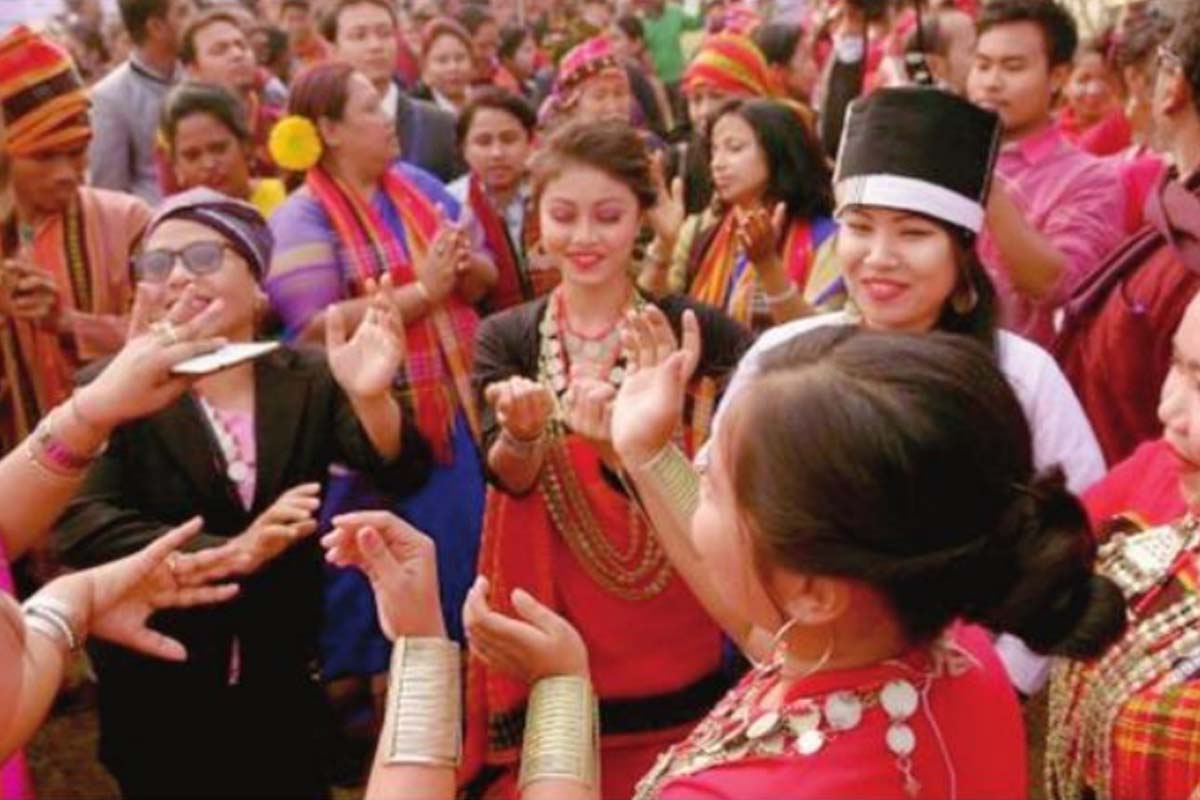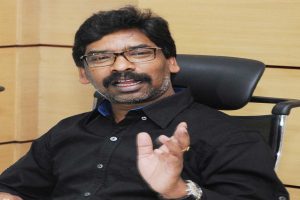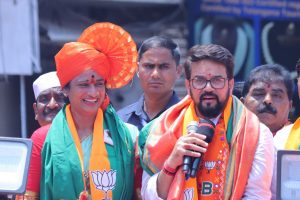The 21st century has ushered in a new dawn for Kokborok in the once-princely state Tripura is the third smallest state in the country. It is bordered by Bangladesh on three sides – north, south and west –, and Assam and Mizoram to the east. Its inhabitants are a diverse mix of 19 indigenous tribal groups and a large Bengali-speaking community.
Tripura has a long history. At its peak, the Tripuri kingdom was said to have included the whole eastern region of Bengal from the Brahmaputra River in the north and west, the Bay of Bengal in the south and Burma to the east during the 14th and 15th centuries AD.
It is believed that the ancient period of the kingdom started around the 7th century when the Tripuri kings ruled from Kailashahar in North Tripura. They used “fa” as their title, a word taken from the Kokborok “pha” which means “father” or “head.”
Advertisement
In the early 15th century, the kings of Tripura adopted “manikya” as their title and shifted their capital to Udaipur, formerly known as Rangamati, on the banks of the river Gomati in South Tripura.
The first Manikya was Maha Manikya, who took the title in honour of a historic victory in a war with Bengal. His descendants inherited the title and continued to use it. This period was the peak of their glory. At the time, even the Mughal rulers in North India acknowledged the power and fame of the Tripuri kingdom.
As monarchs of a Hindu kingdom, the Manikyas had conflicts with the Muslim rulers of Bengal, until they were brought under Mughal suzerainty in the early 17th century. After the Mughals were defeated by the British, Tripura became a princely protectorate of the colonial masters, though the Manikya dynasty continued to rule.
The British Indian government appointed an agent to help the Maharaja in administration in 1871.
The capital of the kingdom was shifted to Agartala in West Tripura, where the state capital remains till today. Kirit Bikram Kishore Manikya Bahadur Debbarma, who reigned from 1947 to 1949 from Agartala, was the last ruler of the princely state of Tripura. After his time, the kingdom was merged with India on 9 September 1949. It ended five centuries of Manikya rule.
Tripura became a Union Territory on 1 July 1963, and attained the status of a full-fledged state on 21 January 1972. Tripura is also rich in myths and legends. Here is one about how this kingdom got its name: Tripurasur, an ardent devotee of Shiva, was ruling over the kingdom. He was a mighty king who subdued the surrounding countries.
He constructed a huge temple of Shiva, and all the citizens of his country worshipped no other gods. When some gods came there expecting to be worshipped too, they went back disappointed and humiliated.
So all the gods came together and asked Brahma to intervene. Brahma replied that Tripur and his subjects were following the rules of the Vedas so he could not do anything. Then all the gods went to Vishnu and asked for his help. Vishnu told them to make Shivalingas and worship Shiva for three nights. Vishnu himself sat in meditation.
When a man named Mundi was born out of him, Vishnu ordered him to go to Tripur’s kingdom and preach a false religion. He gave Mundi a false religious book containing 16,000 slokas.
These were against the Vedas, against virtues, ethics and codes of conduct. Tripur became a disciple of Mundi and was hypnotised to do all kinds of irreligious acts, and his people followed his example.
The gods then went to Mount Kailash and reported to Shiva about the goings on in Tripur’s kingdom. Shiva opened his third eye and looked. He saw that the kingdom was full of criminal activities, chaos and false rituals. On seeing this, Shiva decided to kill Tripur with his Trisul.
But his queen Heeravati gave birth to a son named Trilochan, who became a virtuous and well-respected king. According to this mythology, the state of Tripura derived its name after Tripur the king.
The main native language of Tripura is Kokborok, which belongs to the Sino-Tibetan group of languages. It is also spoken in the neighbouring areas of Bangladesh, and is closely related to Boro, Dimasa and Kachari languages spoken in parts of Assam.
Kokborok has its original script known as Koloma. But it was replaced by the Bengali script in the 19th century. Bir Chandra Manikya, one of the rulers who ascended the throne in 1870, was a lover of Bengali culture. He initiated a series of political reforms, and Bengali was adopted as the court language during his rule.
However, the Roman script began to be used for Kokborok during the British rule. And since the Independence of India, this script has been promoted by non-governmental organisations.
The Tripura Tribal Areas Autonomous District Council made rules for the adoption of the script for school education in 1992 and 2000. A movement called Movement for Kokborok was launched in 2004 by various societies and organisations, demanding its inclusion at the university level.
They held a national seminar in the same year at Agartala, where speakers from different universities and institutes advocated the use of the Roman script for Kokborok.
The first chronicle of the kings of Tripura, the Rajmala, was originally written in Kokborok language, and later translated into Bengali as ordered by king Dharma Manikya.
After the Rajmala, Kokborok writing was hardly found for several centuries until it was revived at the end of the 19th century. There has been a vigorous movement to develop Kokborok literature since the second half of the 20th century.
Smai Kwtal, a translation of the New Testament of the Bible, published in 1976, was the first popular literature among the Tripuri community. It has gone through many reprints and revisions.
The Tripura government adopted Kokborok as a state language in 1979. Only since then, important government notifications have been communicated in Kokborok along with Bengali. The 21st century ushered in a new dawn for Kokborok literature with the publication of a Kokborok dictionary and the re-publishing of the Rajmala in the language.
Many novels, short stories, poetry, drama, and non-fiction works including philosophy, have been published. The present trend shows that Kokborok literature is steadily moving forward. Let’s hope the robust movement continues. The writer is a poet and novelist. Her book Zorami: A Redemption Song was the first literary English language novel by a Mizo author
Advertisement











